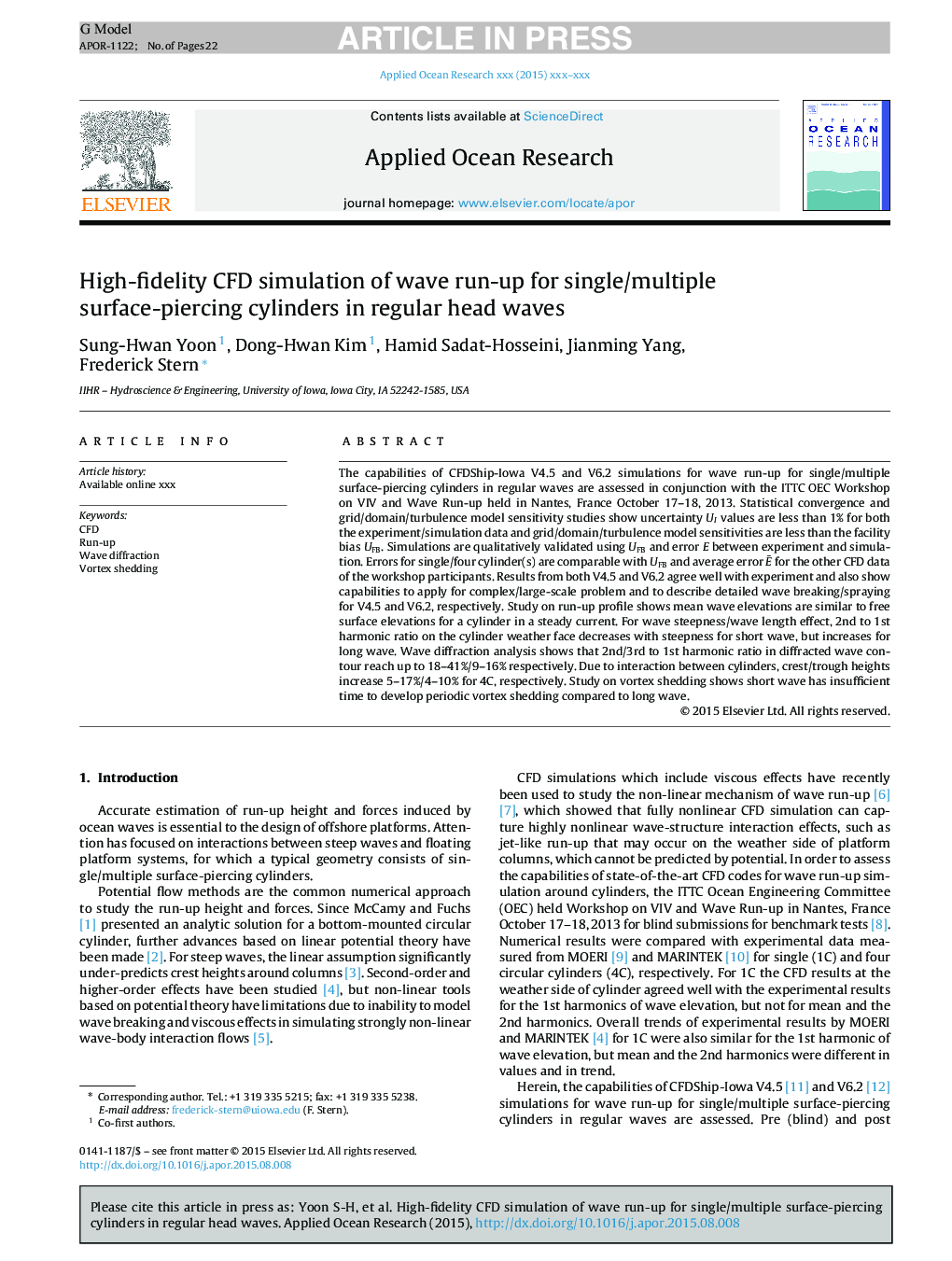| Article ID | Journal | Published Year | Pages | File Type |
|---|---|---|---|---|
| 8059382 | Applied Ocean Research | 2016 | 22 Pages |
Abstract
The capabilities of CFDShip-Iowa V4.5 and V6.2 simulations for wave run-up for single/multiple surface-piercing cylinders in regular waves are assessed in conjunction with the ITTC OEC Workshop on VIV and Wave Run-up held in Nantes, France October 17⿿18, 2013. Statistical convergence and grid/domain/turbulence model sensitivity studies show uncertainty UI values are less than 1% for both the experiment/simulation data and grid/domain/turbulence model sensitivities are less than the facility bias UFB. Simulations are qualitatively validated using UFB and error E between experiment and simulation. Errors for single/four cylinder(s) are comparable with UFB and average error E¯ for the other CFD data of the workshop participants. Results from both V4.5 and V6.2 agree well with experiment and also show capabilities to apply for complex/large-scale problem and to describe detailed wave breaking/spraying for V4.5 and V6.2, respectively. Study on run-up profile shows mean wave elevations are similar to free surface elevations for a cylinder in a steady current. For wave steepness/wave length effect, 2nd to 1st harmonic ratio on the cylinder weather face decreases with steepness for short wave, but increases for long wave. Wave diffraction analysis shows that 2nd/3rd to 1st harmonic ratio in diffracted wave contour reach up to 18⿿41%/9⿿16% respectively. Due to interaction between cylinders, crest/trough heights increase 5⿿17%/4⿿10% for 4C, respectively. Study on vortex shedding shows short wave has insufficient time to develop periodic vortex shedding compared to long wave.
Related Topics
Physical Sciences and Engineering
Engineering
Ocean Engineering
Authors
Sung-Hwan Yoon, Dong-Hwan Kim, Hamid Sadat-Hosseini, Jianming Yang, Frederick Stern,
